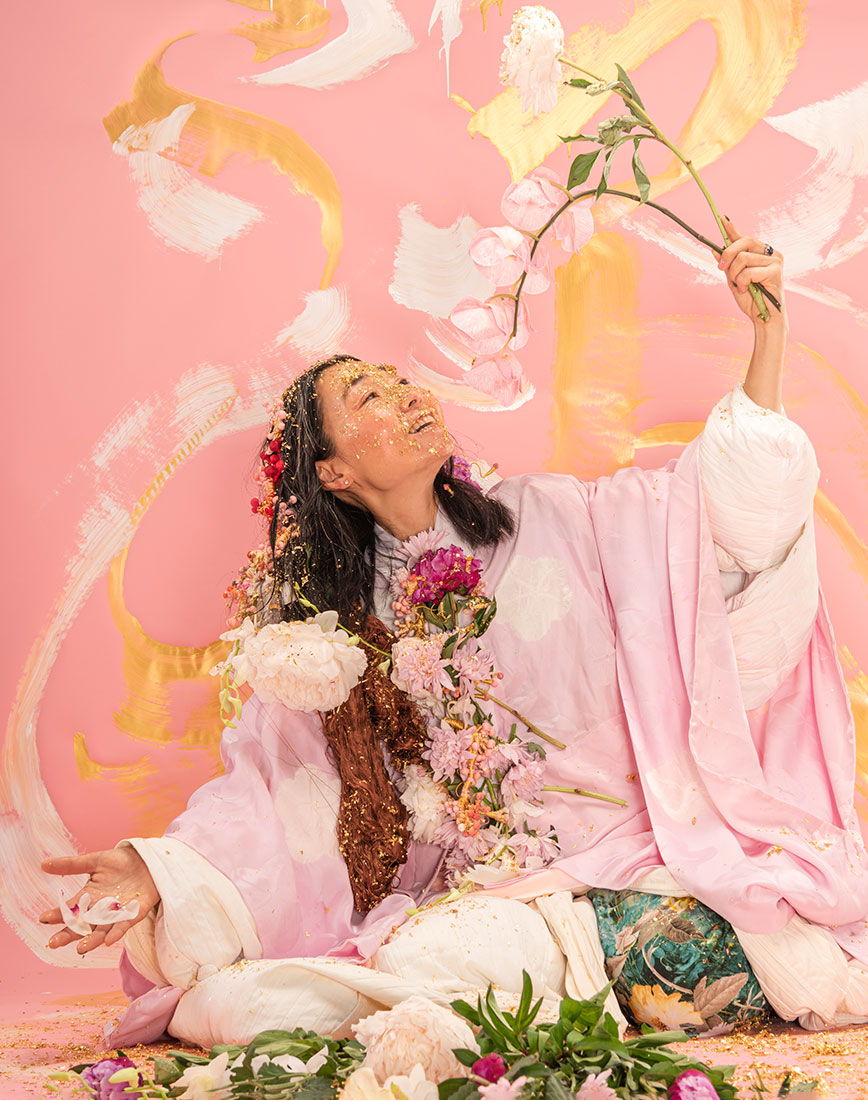Communities from across Brisbane and visitors alike will be invited to create beautiful blooms and buds inspired by flowers found in Meanjin/Brisbane from upcycled textiles and local materials. Visitors are encouraged to participate in facilitated sessions, or simply drop-in and engage in self-guided activities.
As the seasons change, the handmade flowers will be added to the walls of the gallery, creating an abundant garden reflecting community engagement.
What flowers will you grow in our healing garden?
Audio content is available here.
We respectfully acknowledge Warunghu, Aunty Raelene Baker’s insight, conversation and participation in developing this project. We thank Molly Green for her commitment, generosity and contribution. Hiromi would also like to extend her personal thanks to her representative gallery, Sullivan + Strumpf; Professor David Craik, Wendy Mansell, Bronwyn Adams, Eva Bunker and The University of Queensland’s Institute for Molecular Bioscience (IMB); Chris Radman, Nathan Simmons and Salty Dog Media; Lisa Behan, Kim Best and Ayuko Oba; Kitty Taube; and Henry Collins and Taj Morgan.
MoB’s Artist in Residence program is supported by Tim Fairfax AC.
In this video, Hiromi Tango gently guides you through the process of making three flowers endemic to our local area; tulipwood, Brisbane wattle and native hibiscus. As the seasons change, these species paint the city in a kaleidoscope of colours: from buttery yellows and pastel pinks, to burnt oranges and luscious creams. For tens of thousands of years, these species have been cared for and respected by local Aboriginal communities. They are of great significance to this place, and were selected as the stimuli for this project in collaboration with Warunghu, Aunty Raelene Baker.
In this video, Hiromi Tango, Elena Dias-Jayasinha (Curator, Museum of Brisbane), Warunghu, Aunty Raelene Baker (Indigenous Advisor, Museum of Brisbane) and Dr Yen-Hua Crystal Huang (Research Fellow, Institute for Molecular Bioscience, The University of Queensland) gently explain how the 花弁 Hanabira (Gentle Petal) residency project came to fruition.
Hiromi Tango creates spaces for expression, healing and transformation. She applies scientific understandings of the brain – including epigenetics and neuroplasticity – to her work, and frequently collaborates with experts in neuroscience. She produces sculptural installations that invite audience engagement and often incorporate performance.
Hiromi’s process is cumulative; she weaves, wraps and stitches over everyday objects and materials before joining them together to construct immersive environments. Through engaging all the senses, the artist redirects attention to our bodies and sharpens our emotional awareness. Her participatory workshops, performances and installations encourage us to reflect more meaningfully upon ourselves and our social connections.
